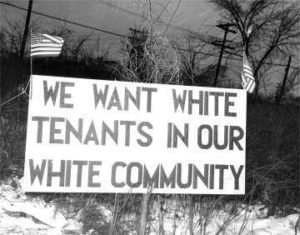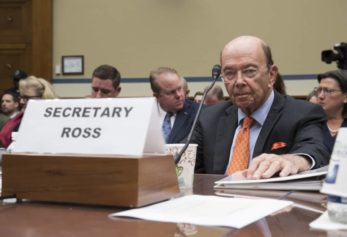By Manny Otiko
The United States Supreme Court is set to make several important rulings this week including a decision that could eliminate parts of the 1968 Fair Housing Act which bars housing discrimination. The Supreme Court is set to rule on a case, Texas Department of Housing and Community Affairs v. The Inclusive Communities Project (also known as Inclusive Communities).
Inclusive Communities, a Texas based group that promotes racial equality, has challenged the Texas Department of Housing and Community Affairs’ practice of awarding tax credits for the construction of affordable housing. Inclusive Communities says the Texas Department of Housing and Community Affairs only backs housing projects in low-income communities. This condemns residents to be stuck in high-crime neighborhoods with poorly performing schools.
The issues in the case speak to problems of self-segregated housing. Even 40 years after the Fair Housing Rights Act, Americans tend to live in separate neighborhoods. A lot of this has to do with income. White neighborhoods tend to be wealthier, while Black neighborhoods tend to be poorer. However, even when middle class and high-income Black families try to move into white neighborhoods they face resistance.
A story in The Atlantic illustrates some of the problems the town of Beaumont, Texas is having as it tries to move low-income, mainly Black families, out of a neighborhood with substandard housing.
“Affluent neighborhoods throughout the country resist the construction of affordable housing in their backyard,” said Atlantic writer Alana Samuels. “White residents self-segregate, and though poverty might not be limited to urban areas, it is often the most concentrated where minorities live. In places such as Beaumont, federal funding to build homes for Black residents in white areas is lost because neither white nor Black residents want that to happen.”
However, this is not just a problem of poverty and the inability to buy homes in wealthy neighborhoods. Atlanta, Ga., which is known as the capital of Black America and has a thriving Black middle class, is still struggling with housing segregation, as white homeowners have moved to the outer suburbs.
According to an article in Southern Spaces, a journal of regions, cultures and places of the South, Black and white Atlanta homeowners still tend to live and buy properties in different places.
“Even as the metropolitan region’s African American population becomes increasingly suburban, residents remain equally (if not more) likely to live in racially segregated neighborhoods,” said Dr. Karen Beck Pooley, a professor at Lehigh University. “This analysis documents how stubborn residential segregation (partially the result of ongoing white flight from those areas attracting minority residents) has serious implications for Black households’ ability to build wealth through homeownership.”
The Supreme Court’s expected ruling on the Fair Housing Act is not the only decision it has made on civil rights-era legislation. In 2014, the Supreme Court ruled 5-4 parts of the 1965 Voting Rights Act were no longer necessary because suppression of Black voters was no longer an issue.
“The majority opinion, authored by Chief Justice John Roberts and joined by Justices Antonin Scalia, Anthony Kennedy, Clarence Thomas and Samuel Alito, stated that ‘things have changed dramatically’ in the South and that the ‘country has changed since the Voting Rights Act was passed,” said The Huffington Post. “The court argued the law had successfully defended against discrimination, but was no longer needed.”
However, a 2013 MSNBC article pointed out the Voting Rights Act was used to stop laws in Texas and Florida that would have made it more difficult for thousands of minority voters to cast ballots.


